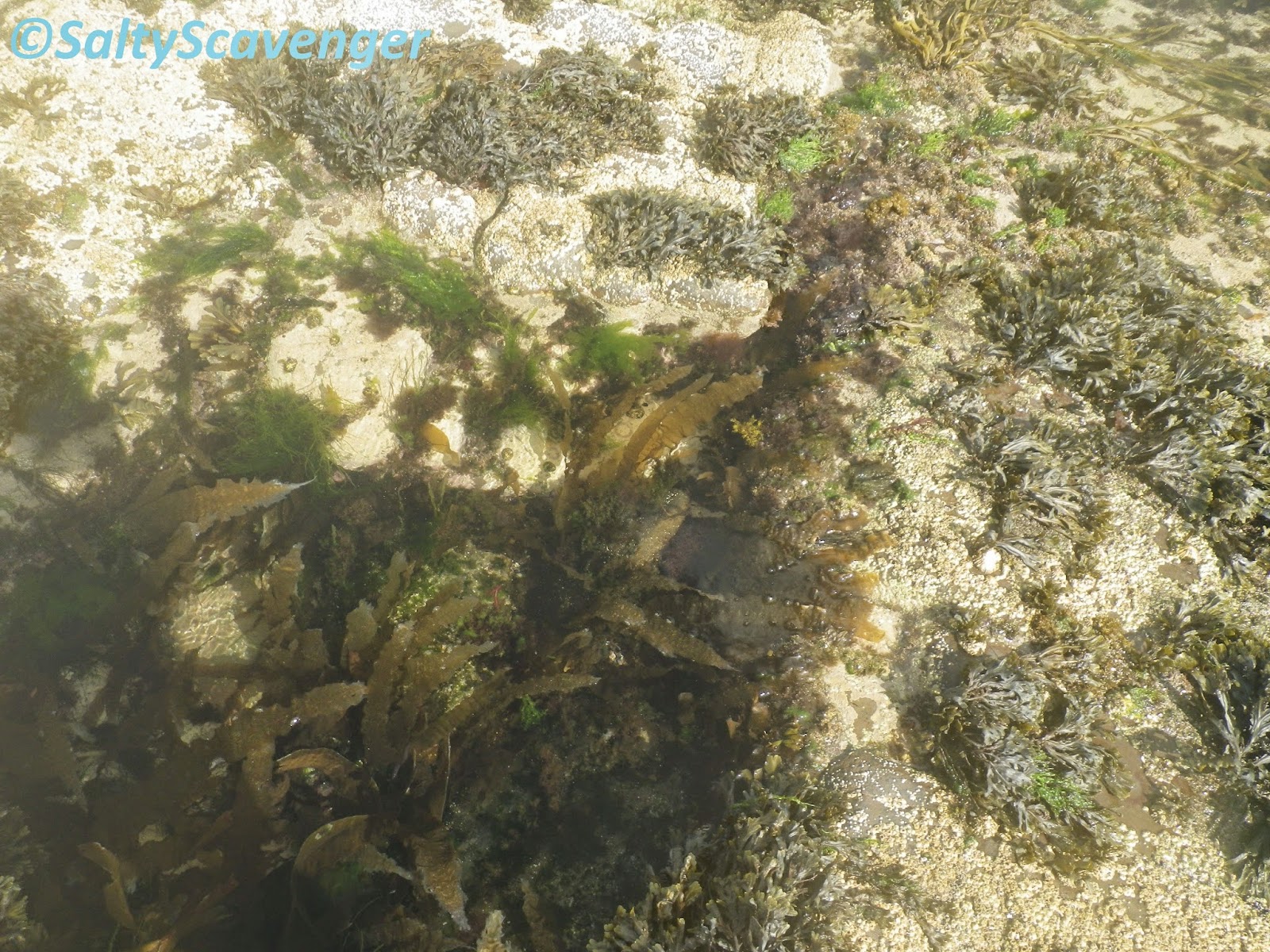The exposed to moderately exposed shore is comprised of sloping bed rock and boulders with crevices, gullies and rockpools. There is freshwater influx from a small waterfall at the base of the cliffs.
Lichens characterise the supralittoral and littoral fringe. Whilst limpets and sparse barnacles charecterise the upper shore with periwinkles throughout both the littoral fringe and upper shore (See previous post).
Rockpools occur from the upper shore down. The majority of which are encrusted with corallinaceae crusts. These coralline rockpools support a variety of fauna depending on their relative size, exposure and position on the shore.
Habitat classification:
Substrate
|
LR (Littoral rock)
|
Habitat
|
LR.FLR (Features of ilttoral rock)
|
Biotope complex
|
LR.FLR.Rkp (Rockpools)
|
LR.FLR.Lic.(Lichens on supralittoral
and littoral fringe rock).
|
Biotope
|
LR.FLR.Rkp.Cor (Coralline crust
dominated shallow eulittoral rockpools)
|
LR.FLR.Rkp.FK (Fucoids and Kelp in deep eulittoral rockpools)
|
LR.FLR.Lic.Ver (Verrucaria Maura on
littoral fringe rock)
|
LR.FLR.Lic.YG (Yellow and grey
lichens on supralittoral rock)
|
Sub biotope
|
LR.FLR.Rkp.Cor.Cor (Corallina
officinalis and coralline crusts in shallow eulittoral rockpools)
|
|
|
|
 |
| The shore is comprised of sloping bed rock and boulders with crevices, gullies and rockpools. |
 |
| A shallow coralline rockpool covered in corallinaceae crust. Habitat classification: LR.FLR.Rkp.Cor (Coralline crust dominated shallow eulittoral rockpools). |
 |
| Coralline rockpools come in a variety of forms and larger pools tend to support more species. |
 |
| The coralline rockpools are extensive in the mid and lower shore and support and increased variety of seaweed species, including clumps of Coral weed (Corallina officinalis). Habitat classification: LR.FLR.Rkp.Cor.Cor (Coralline crusts and Corallina officinalis in shallow eulittoral rockpools). |
 |
| A variety of seaweed species can be found within the coralline rockpools, especially in the summer months. The seaweeds comprise a variety of reds plus ephemeral greens. |
 |
| The most obvious seaweed is the encrusting corallinaceae crusts that make the rockpool look like it has been covered in pink paint. |
 |
| The other charecteristic seaweed to be found within the rockpools is coral weed (Corallina officinalis). |
 |
| C.officinalis can form turfs on the sides and bottom of the rockpools. |
 |
| C.officinalis grows on top of the corallinaceae crust. |
 |
| A variety of red seaweeds also occur within the coralline rockpools. |
 |
| Ceranium sp |
 |
| Codium sp |
 |
| A number of gastropod species occur within the coralline rockpools. Including edible periwinkles (Littorina littorea) and limpets. |
 |
| Edible periwinkles (Littorina littorea) and limpet within a coralline rockpool. |
 |
| The 'home' scar left by a limpet |
 |
| Barnacles also occur in some rockpools and look as if they almost 'erupt' from the corallinaceae crust. |
 |
| Barnacles amongst corallinaceae crust |
 |
| On the lower shore sugar kelp (Saccharina latissima) begins to occur within the deeper rockpools. Habitat classification: LR.FLR.Rkp.FK (Fucoids and Kelp in deep eulittoral rockpools). |
 |
| Saccharina latissima occurs within deeper rockpools. |
 |
| Serrated wrack (Fucus serratus) and Thong weed (Himanthalia elongata) also occur in the deeper lower shore rockpools. |
 |
| Fucus serratus |
 |
Breadcrumb sponge (Halichondria (Halichondria) panicea) occurs within the deepest pools near the low tide mark.
|
























No comments:
Post a Comment